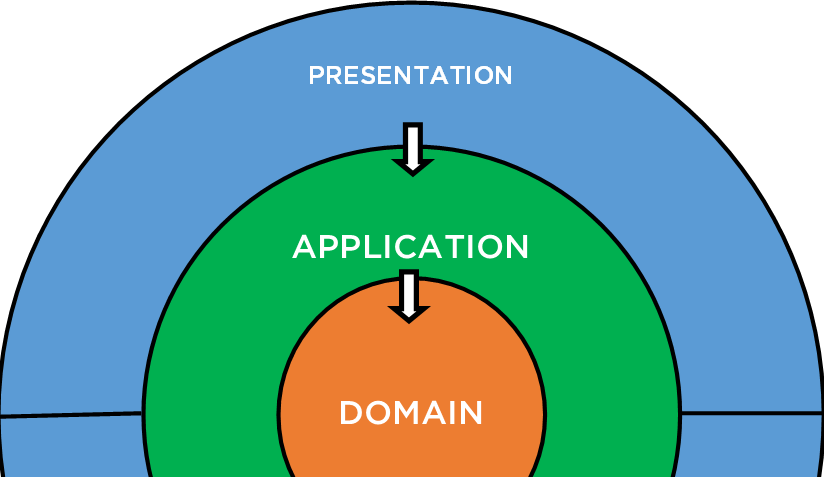As mentioned above at the beginning of the article, Onion Architecture is not a one-size-fits-all solution. It has its learning curve and is best suited for services with a clear domain definition. This makes it a bad choice, for more technical-oriented services, e.g. a high-throughput proxy written in a reactive framework.
Data held by the domain objects has to be translated from layer to layer. Domain Layer– At the very core is the Domain layer which holds all of your domain objects. Please restrict yourself by keeping just the properties or definitions inside your domain objects and not any piece of code which talks to database or has any other business functions. Besides the domain objects, you could also have domain interfaces, but just the interfaces and not any kind of implementation.
comments on “Hexagonal Architecture – What Is It? Why Should You Use It?”
Let us see what Onions combined with Domain Driven Design produces. Upon first sight the layer model seems straightforward and easy to adopt. Unfortunately developers often take the layering literally. Infrastructure abstraction makes it easier to adapt and adopt new technologies that best meet application requirements. To handle this, DDD requires that each language belongs to one application context. It defines a scope where a ubiquitous language can be used freely.
That’s quite everything in this simple yet powerful implementation of Onion Architecture in ASP.NET Core. To keep things simple but demonstrate the architecture to the fullest, we will build an ASP.NET Core Web API that is quite scalable. For this article, Let’s have a WebApi that has just one entity, Product.
- All these architectures are basically saying you should split up your code into separate areas of concern, and all the normal rules about dependencies and coupling always apply, redardless.
- To pass the data from UI to a controller to edit a user, use same view model named UserViewModel.
- Since the domain changes the most — here is the place where you put all the new features, and business requirements — it should be as easy as possible to modify and test.
- OnModelCreating method, we are configuring our database context based on the entity configurations from the same assembly.
- There are multiple interfaces, making it easy to get lost in the whole mix.
The business logic should be able to be developed and tested in isolation from the database, other infrastructure, and third-party systems. From a business logic perspective, it makes no difference whether data is stored in a relational database, a NoSQL system, XML files, or proprietary binary format. All classes which have dependencies to concrete things like the database, the file system, the view and more reside in the outer rings.
System Development Life Cycles: Phases, explanations, and methodologies
The Test project will have the tests and the MVC project will contain the MVC controllers and the view. The most interesting thing to notice that there are no special references in this project, and the domain objects are flat objects as they should be, without any heavy code or dependencies. Domain services are responsible for holding domain logic and business rules. All the business logic should be implemented as a part of domain services. Domain services are orchestrated by application services to serve business use-case.
It’s the outer-most layer, and keeps peripheral concerns like UI and tests. For a Web application, it represents the Web API or Unit Test project. This layer has an implementation of the dependency injection principle so that the application builds a loosely coupled structure and can communicate to the internal layer via interfaces. At the center part of the Onion Architecture, the domain layer exists; this layer represents the business and behavior objects.

In this layer, service interfaces are kept separate from its implementation, keeping loose coupling and separation of concerns in mind. The repository layer act as a middle layer between the service layer and model objects. We will maintain all the database migrations and database context Objects in this layer. We will add the interfaces that consist the of data access pattern for reading and writing operations with the database. We will add the interfaces that consist of the data access pattern for reading and writing operations with the database.
Exploring Blazor Project Structure – Blazor For Beginners
Alistair Cockburn introduced it in 2005, with the core idea behind it being to make applications independent of direct dependency from UI and database. This isolation is supported through the concept of ports and adapters. The main difference I’ve found in the implementations of Hexagonal Architecture and Onion Architecture lies mostly in the overall, more structured approach to the code layout of the latter. Making the onion architecture concept a first-class citizen represented in the code guides implementation and gives more clear overall structure to the codebase. It can be successfully used as an alternative to a popular Hexagonal / Ports and Adapters architecture, and as such is predominantly used in the backend, business applications and services. In the EF code first approach, we create the data context class which will represent the database.
Better keep your repository interface in another project rather than keeping it in the project where your entities are kept. We have created the controller along with the view using the scaffolding. At this point if we notice the web project, we will find BloodDonors controller and a BloodControllers subfolder in the view folder.
This is something really bad in building scalable applications and may pose issues with the growth of the codebase. To keep it clear, in the above diagram we can see that the presentation layer depends on the logics layer, which in turn depends on the data access and so on. The outer layers of the architecture implement these interfaces. This means that in the Domain layer, we are not concerning ourselves with infrastructure details such as the database or external services.
Now, let’s create a repository class to perform database operations on the entity, which implements IRepository. This repository contains a parameterized constructor with a parameter as Context, so when we create an instance of the repository, we pass a context so that the entity has the same context. The code snippet is mentioned below for the Repository class under OA.Repo project. The DbContext must have an instance of DbContextOptions in order to execute. We will use dependency injection, so we pass options via constructor dependency injection. ASP.NET Core is designed from the ground to support and leverage dependency injection.
Domain Layer
The best way would be to rely on Repository layers that can create the necessary abstraction over the Data Access Technology. You can now move the EFCore to an Infrastructure Layer. Command Query Seperation splits commands and queries into different request types, where commands alter state and may introduce side effects, while queries are read-only and side-effect free. The two types of requests can/do share a common model and data store. This is an application level pattern to clarify intent.
That’s why it was difficult to immediately divide the functionality into the necessary microservices. The system can be quickly tested because the application core is independent. DDD implies that you distinguish a certain bounded context, which is a set of entities tightly connected with each other but minimally connected with other entities in your system. Our customer needed a software system compatible with their hardware so that clients could buy equipment, install software and create and manage content. The challenge was to create a cloud software solution for a digital signage hardware manufacturer. Network protocols — microservices interact with each other via network protocols such as HTTP and HTTPS.
What is Onion Architecture?
These four projects represent four layers of the onion architecture. To implement the Onion architecture, we develop an ASP.NET Core application. This application performs CRUD operations on entities. The application holds four projects as per figure 2. Each project represents a layer in onion architecture.
Configuring the Services
Onion architecture uses the concept of the layer but is different from N-layer architecture and 3-Tier architecture. Here, the DefaultConnection is connection string which defined in appsettings.json file as per following code snippet. And yes, ultimately, each folder i describe above will be converted to a c# library project. If you call it, it’s part of the Infrastructure layer.
With Onion Architecture, the game changer is that the Domain Layer is at the Core of the Entire Application. In this approach, we can see that all the Layers are dependent only on the Core Layers. As of now we have created the controller using the model and data context class.
Divide the application into different modules/projects each responsible for a layer in onion architecture. I recently started to learn .Net Core and found that there is what is called clean architecture and knew nothing about it. You have made it clear and simple though yet not confident with it because I know the coding part will be application-specific and hence will differ here and there. I am pleased with this Onion architecture and I wish to follow it more and more by implementing it in all my projects.


